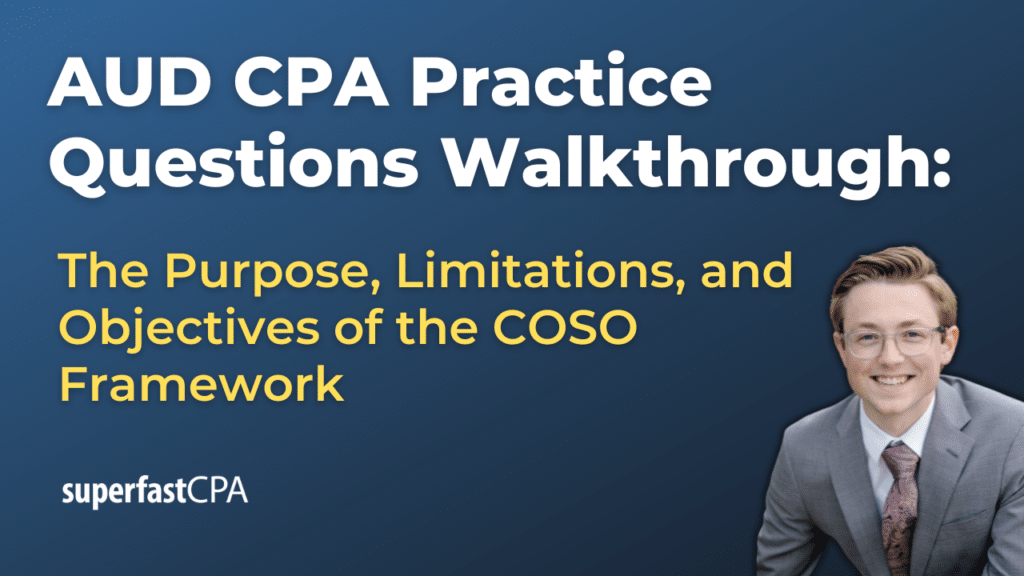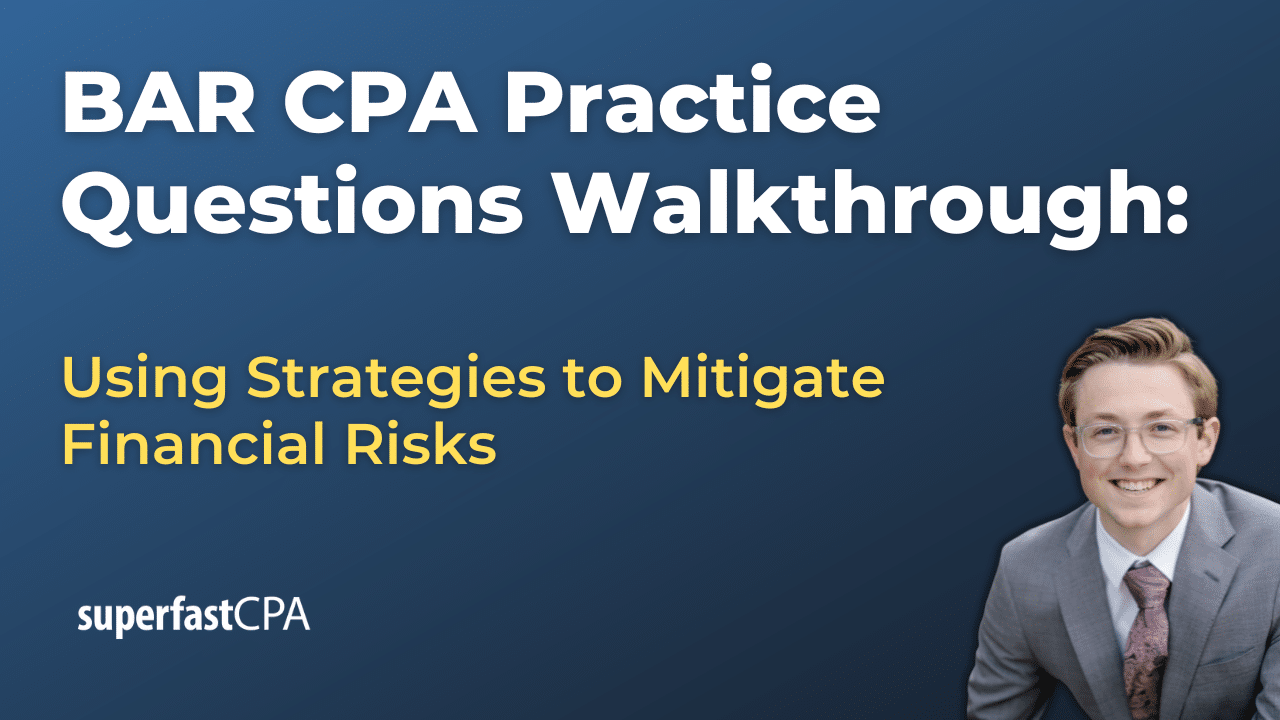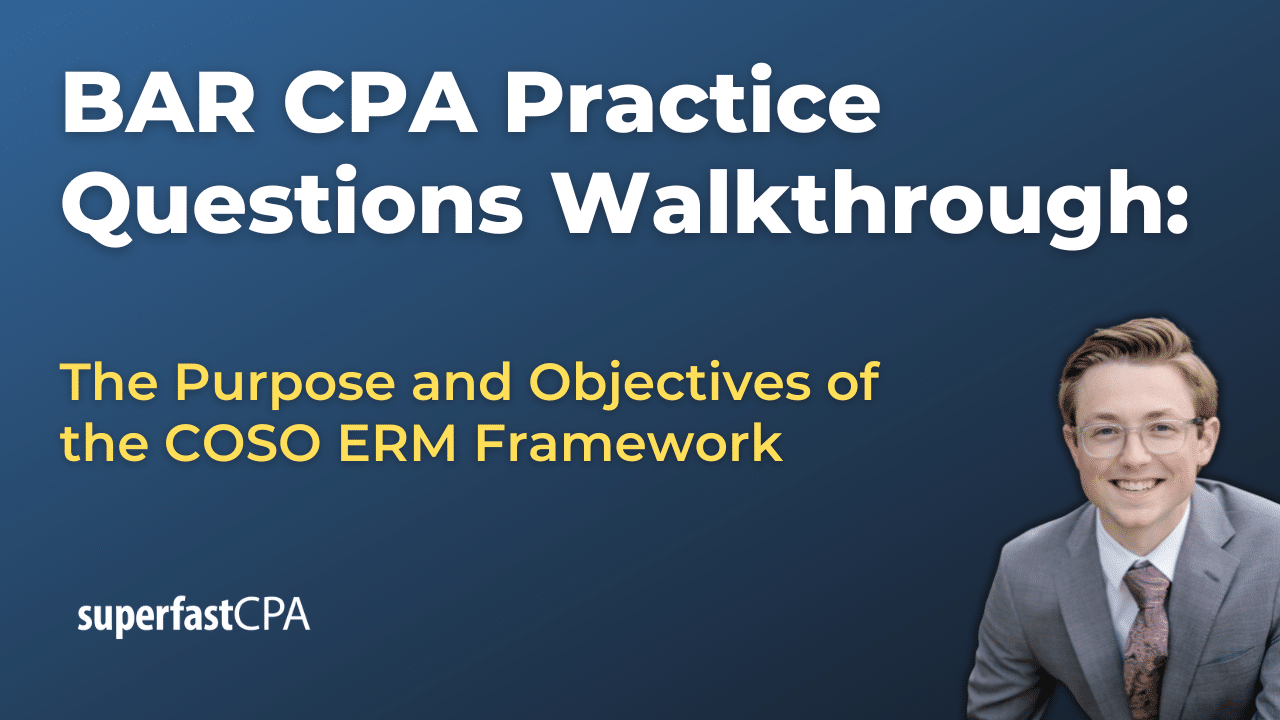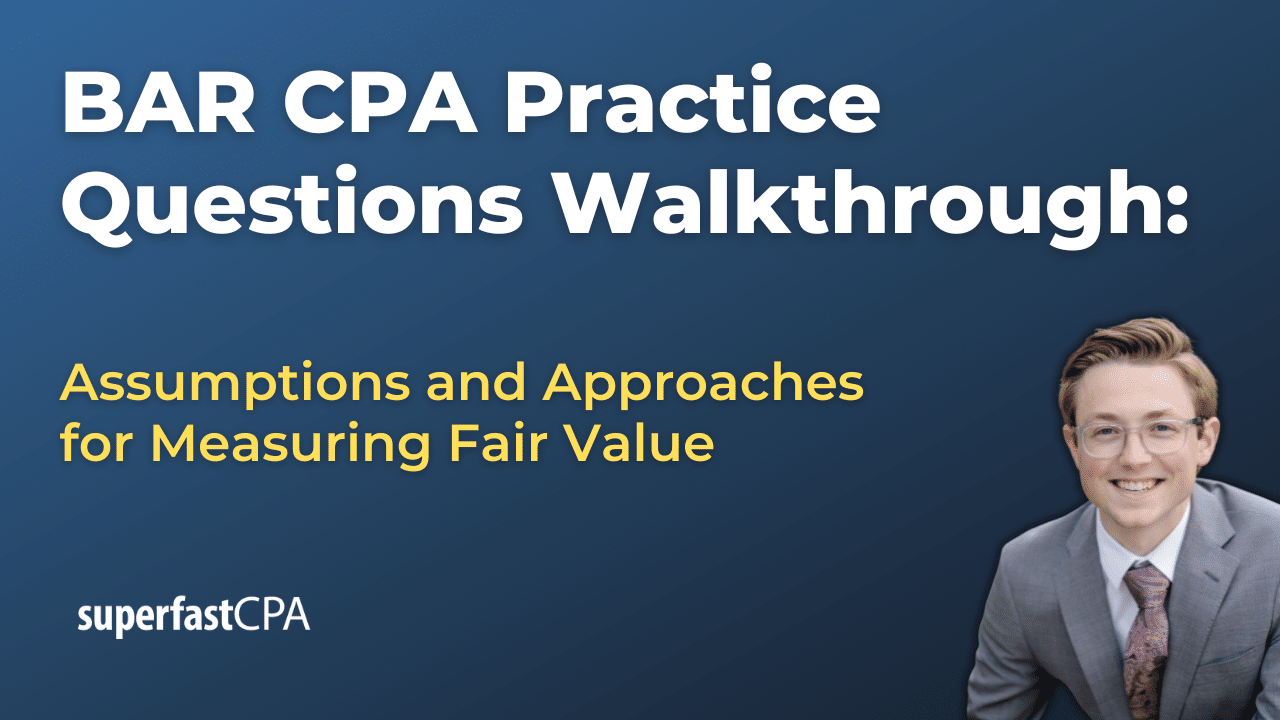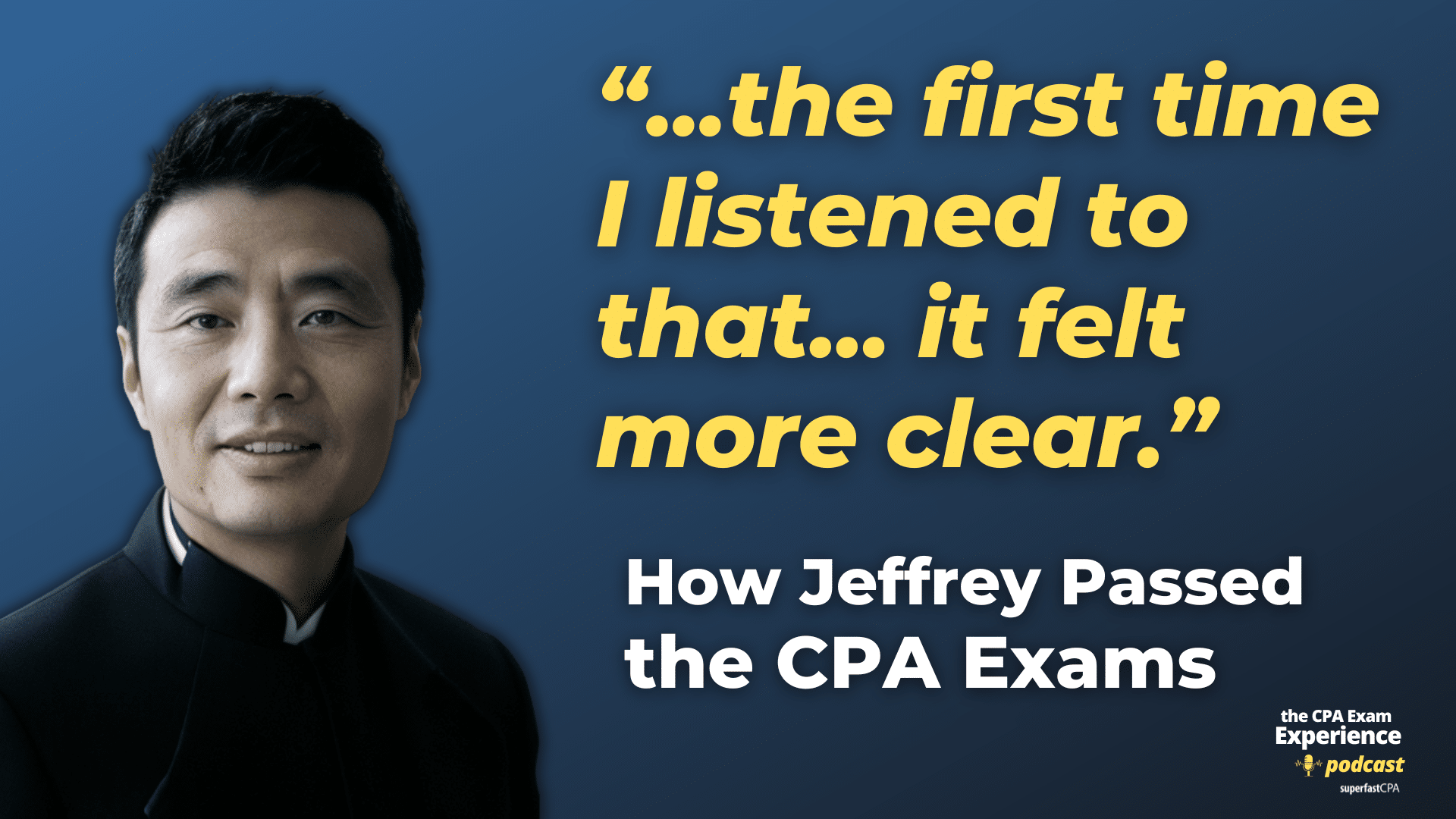In this video, we walk through 5 AUD practice questions to teach about the purpose, limitations, and objectives of the COSO framework. These questions are from AUD content area 2 on the AICPA CPA exam blueprints: Assessing Risk and Developing a Planned Response.
The best way to use each video is to pause each time we get to a new question in the video, and then make your own attempt at the question before watching us go through it.
Also be sure to watch one of our free webinars on the 6 “key ingredients” to an extremely effective & efficient CPA study process here…
The Purpose, Limitations, and Objectives of the COSO Framework
The Committee of Sponsoring Organizations of the Treadway Commission (COSO) created a widely recognized framework for designing, implementing, and evaluating internal control systems. The COSO Internal Control Framework is used by organizations worldwide to ensure they meet their operational, reporting, and compliance objectives.
In this post, we’ll explore:
- The purpose of internal control.
- The three categories of internal control objectives under COSO.
- Common limitations of internal control.
- Examples illustrating each of these areas.
Purpose of Internal Control
Definition: Internal control is a process designed to provide reasonable assurance that an organization achieves its objectives in three key areas: operations, reporting, and compliance.
Key Points:
- It does not eliminate all risks, but it helps manage them effectively.
- It involves everyone in the organization—from entry-level employees to top executives and board members.
- It focuses on implementing policies, procedures, and activities that ensure goals are met and assets are safeguarded.
Practical Example:
A retail company might implement point-of-sale controls to reconcile each day’s cash and credit card sales. While this won’t prevent every possible error or fraud, it reduces the risk of significant losses or inaccuracies.
Objective Categories Under COSO
The COSO Internal Control Framework breaks down objectives into three main categories:
- Operations
- Focus: Effectiveness and efficiency of operations, including safeguarding of assets.
- Example: Improving production processes to reduce waste and ensure product quality.
- Reporting
- Focus: Reliability, timeliness, and transparency of financial and non-financial reporting.
- Example: Conducting periodic internal audits to confirm the accuracy of financial statements.
- Compliance
- Focus: Adherence to applicable laws, regulations, and internal policies.
- Example: Ensuring payroll processes meet federal and state employment laws.
Limitations of Internal Control
Even a robust internal control system has limitations and cannot provide absolute assurance. Common limitations include:
- Management Override
- High-level staff (e.g., executives) may bypass internal controls for personal gain or convenience.
- Example: A CFO bypasses the approval process to authorize a payment that ends up being fraudulent.
- Collusion
- Multiple employees working together can circumvent controls designed to stop a single individual.
- Example: Two employees in the accounting department team up to falsify invoices and funnel payments to a personal account.
- Human Error
- Mistakes, misjudgments, or lack of training can cause a breakdown in controls.
- Example: A payroll clerk accidentally types an extra digit when entering salaries, leading to overpayment.
- Reasonable, Not Absolute, Assurance
- Internal controls do not guarantee success or profitability. They reduce risk but cannot eliminate all risks.
- Example: Even with strong controls, unforeseen circumstances (like a sudden system glitch) can cause inaccuracies or delays.
Misconceptions About Internal Control
- It doesn’t guarantee profitability: An organization can have excellent internal controls yet still face unprofitable market conditions.
- It doesn’t eliminate all fraud: Controls help detect and prevent fraud, but collusion or override can still happen.
- It isn’t just about policy compliance: While policies are crucial, internal control is an ongoing, integrated system that spans across operations, reporting, and compliance.
Conclusion
The COSO Internal Control Framework is a foundational guide that organizations use to enhance governance, efficiency, and accountability. By understanding the purpose, objectives, and limitations of internal control, management and employees at every level can help ensure that risk is appropriately managed and organizational goals are met.

